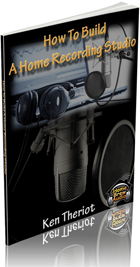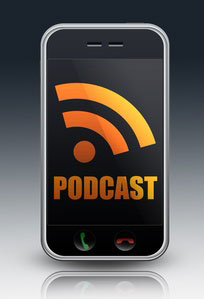There’s only so much that can fixed when mixing. Starting with a good recording will make your life easier, and eventually you may want to have a dedicated area for recording complete with good acoustics and proper wiring. Notably absent from the list of things you want with a home recording studio is a second mortgage, but it doesn’t have to be that expensive. Take a look at the eBook linked below for tons of tips on how to get your studio set up on a budget.
For the link to purchase the eBook for $24, take a look here: http://www.amazon.com/Home-Recording-Studio-Build-Like/dp/143545717X
 We also have an eBook for $5.99 that shows you how to put together a computer-based recording studio capable of producing pro audio starting for under $100. You can get the pdf version here: How To Build a Home Recording Studio.
We also have an eBook for $5.99 that shows you how to put together a computer-based recording studio capable of producing pro audio starting for under $100. You can get the pdf version here: How To Build a Home Recording Studio.
Kindle version: How To Build a Home Recording Studio.
Recording Tips and Techniques
Common Home Recording Studio Mistakes To Avoid
A love of music sometimes isn’t enough to motivate us to get to work in the studio. Keep your goals reasonable. Instead of being dissuaded by the huge cost of professional equipment, remember that home studio gear doesn’t need to be expensive to get good results, and that there is a lot to be said about who is working with the equipment, not just what equipment they’re working with.
Watch the full video for more tips:
Mono Panning And Compatibility
The difference between mono and stereo can ruin a mix if you’re not careful. Losing the cool stereo effects that you worked so hard on might be a little disappointing, but having your track sound lopsided when played with stereo output could be disastrous. Remember that mono and stereo can both refer to input and output. Take a few minutes to listen to your mix in mono to ensure there aren’t any compatibility issues.
You can read more about this here: http://www.audio-issues.com/music-mixing/panning-mono/
Prepare To Mix
Mixing tracks for an album is no small task, but make sure you’ve done your homework before getting started. Keep the big-picture of the album in mind by listening to every track all the way through. Decide if the so-so tracks need to be cut, or maybe just re-recorded. By starting with a good set of tracks, you’re setting yourself up for a successful mixing session.
You can read more mixing tips here: http://therecordingrevolution.com/2013/01/04/3-things-i-do-before-every-mix/
How To Create and Publish Your Own Podcast
 You decided to start a podcast. You picked a great subject that you’re excited and knowledgeable about. You recorded your first episode, putting all that you’ve learned about home recording to good use. There’s a lot more to be done before you can call it a success, but it’s a relatively easy process. What follows assumes you have already recorded the audio for your show, which is ironically the easiest part of a podcast.
You decided to start a podcast. You picked a great subject that you’re excited and knowledgeable about. You recorded your first episode, putting all that you’ve learned about home recording to good use. There’s a lot more to be done before you can call it a success, but it’s a relatively easy process. What follows assumes you have already recorded the audio for your show, which is ironically the easiest part of a podcast.
Podcast subscriptions can be managed by many publishers, with iTunes probably being the biggest. Of course you can publish it yourself too, using a service like Google’s Feed Burner, or simply (shya!!) writing the RSS code yourself. The “long-hand” way (meaning “nobody actually does it like this anymore so don’t freak out reading this next part;)”) to publish is to create an XML file, which will be the source of your podcast information, like name, episode number and title, etc. This then becomes your RSS feed. Use your favorite text editor (Word, WordPad, Notepad, etc.) to create a document that will be saved in the .XML format. There is quite a bit of information available online about XML and RSS guidelines and standards if you want to do all of this manually. The elements (Title, Description, Link & Enclosure) of a podcast XML file are explained in more detail here: http://www.podcast411.com/howto_1.html.
But the “better mousetrap” is to use a program or service to take care of all that icky stuff for you. One excellent program – the one that I use for the Home Brew Audio Podcast – is called FeedForAll. The program makes it simple to input episode and podcast information, turning it into an optimized .XML RSS feed. Your podcast URL is the web address where your podcast episode has been uploaded. Remember that there are other types of podcasts than audio-only; supported file formats for podcasts published through iTunes are .m4a, .mp3, .mov, .mp4, .m4v, .pdf and .epub.
After your RSS feed is set up, technically it’s already published. Anyone can subscribe to it through a feed reader like, say, Google Reader, or any of a number of programs, sometimes called “podcatchers” or “feed aggregators” like FeedDemon, RSSOwl, etc. But in order to subscribe, people have to be able to find your podcast! For the widest exposure, you will want to submit your podcast to a larger publishing service, such as iTunes, for review. If your submission is rejected, look over the feedback to see what needs to be fixed. Check that your RSS feed is complete. For example, every <item> tag needs a matching </item> tag, just like in HTML or other coding language. Once your podcast is accepted by the publishing service, future episodes will be published by updating your XML file, which simply pushes the new information out via the RSS feed.
Not so bad, right? Every good product deserves a good audience, so spread the word about your new production. Share through social media and web forums pertaining to your subject. Be careful to follow local community guidelines. Sometimes a self-promoting post that doesn’t follow the rules of the forum can do more harm than good.
Many people produce podcasts as a labor of love or to drive traffic to their main website to help boost sales. But iTunes has a revenue-sharing system similar to that of YouTube, in that when users subscribe to your podcast, you’ll get a tiny fraction of the ad revenue. It may not be your ticket to a Lamborghini, but a few extra dollars here and there won’t hurt.